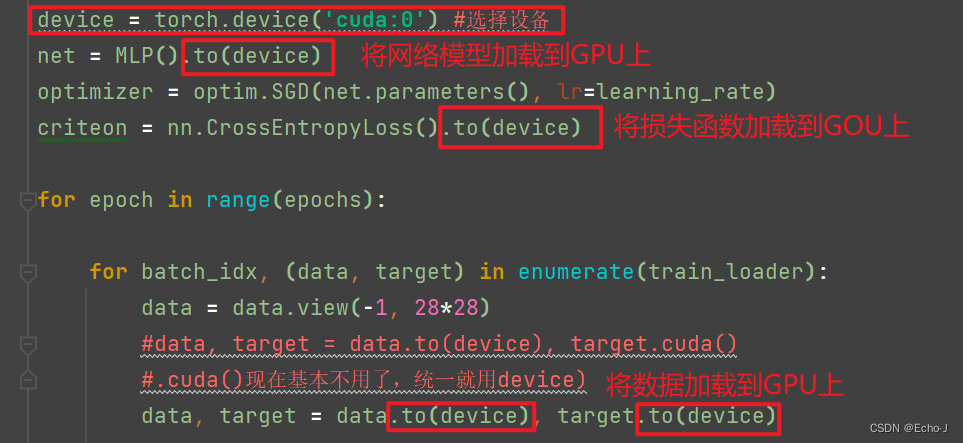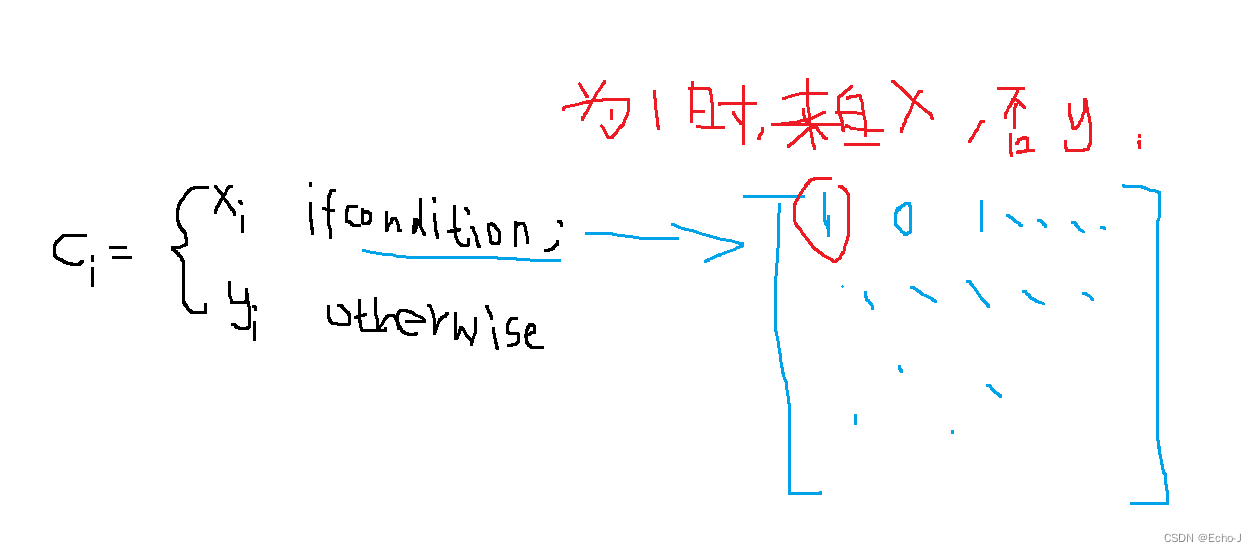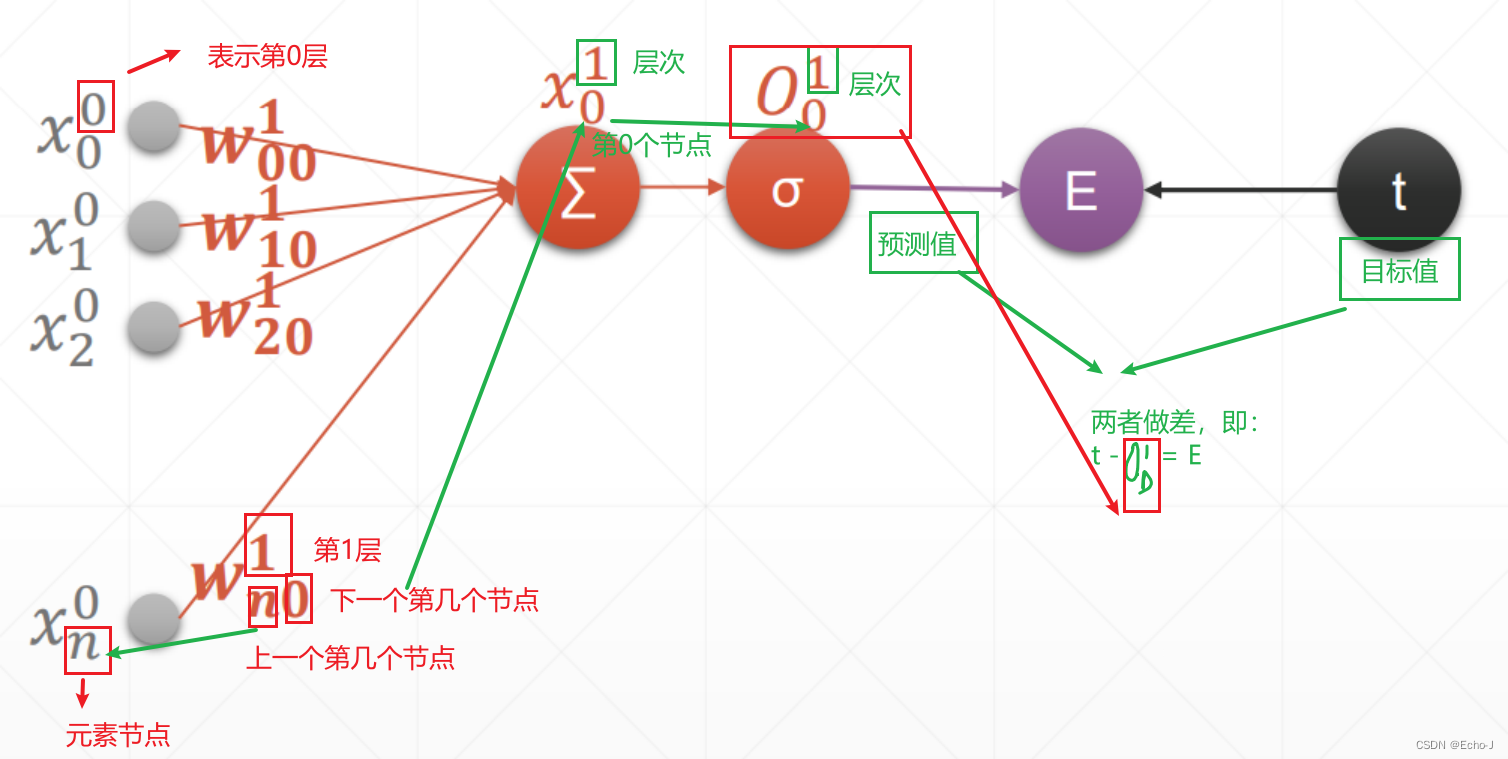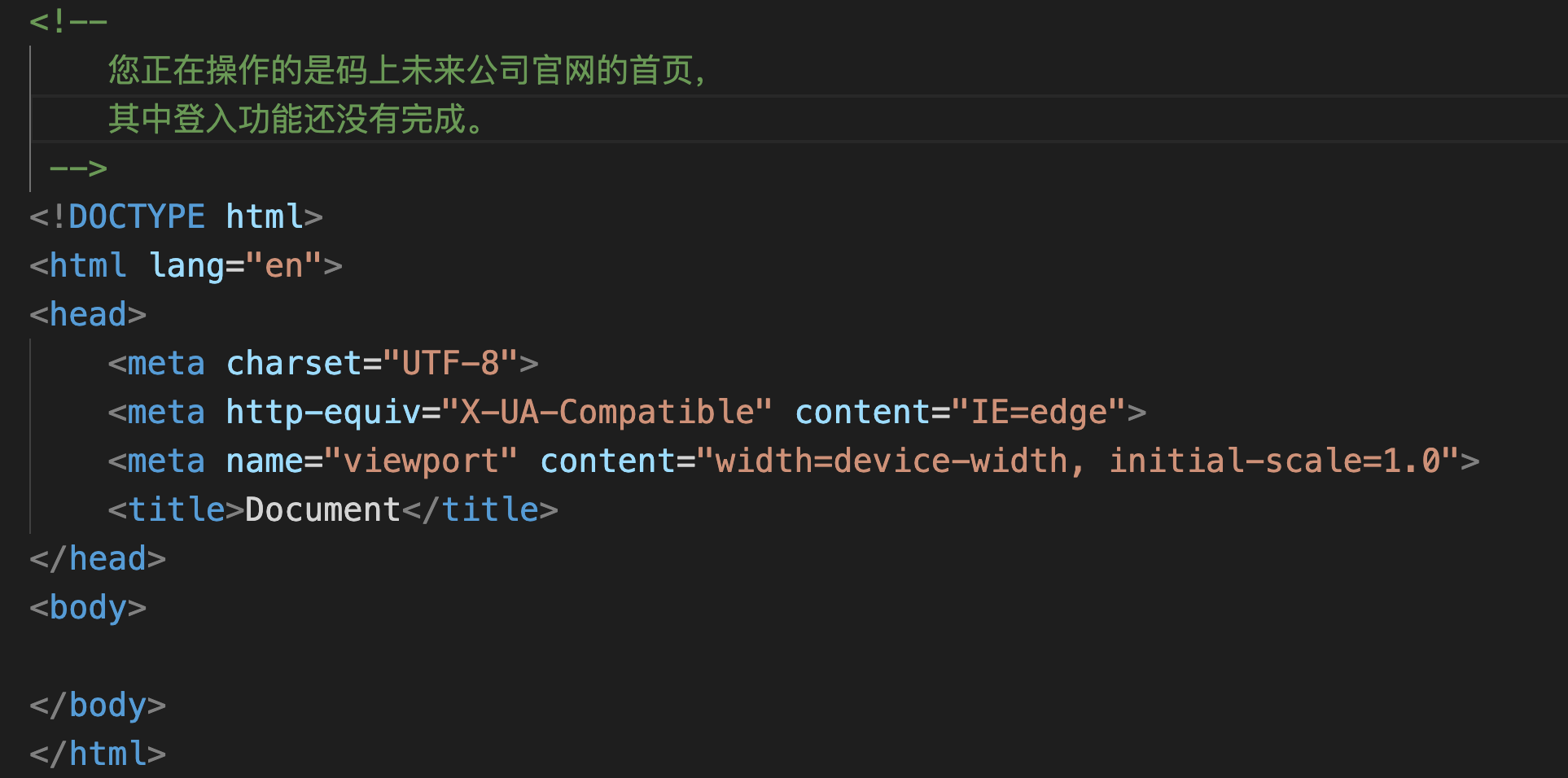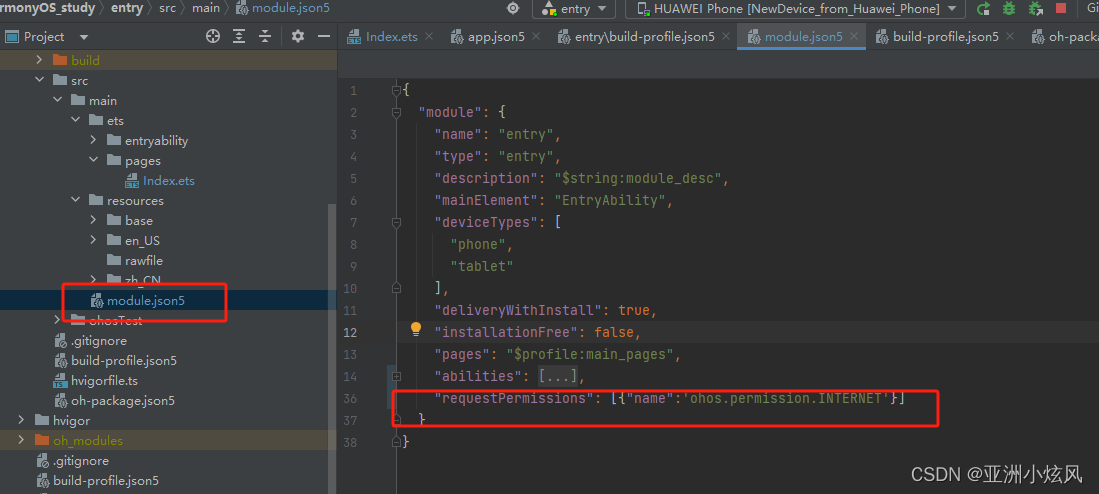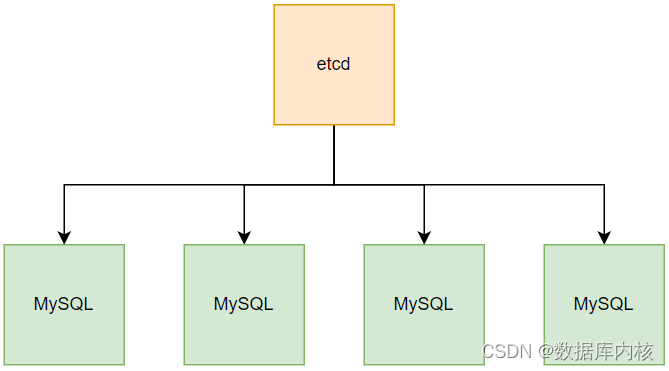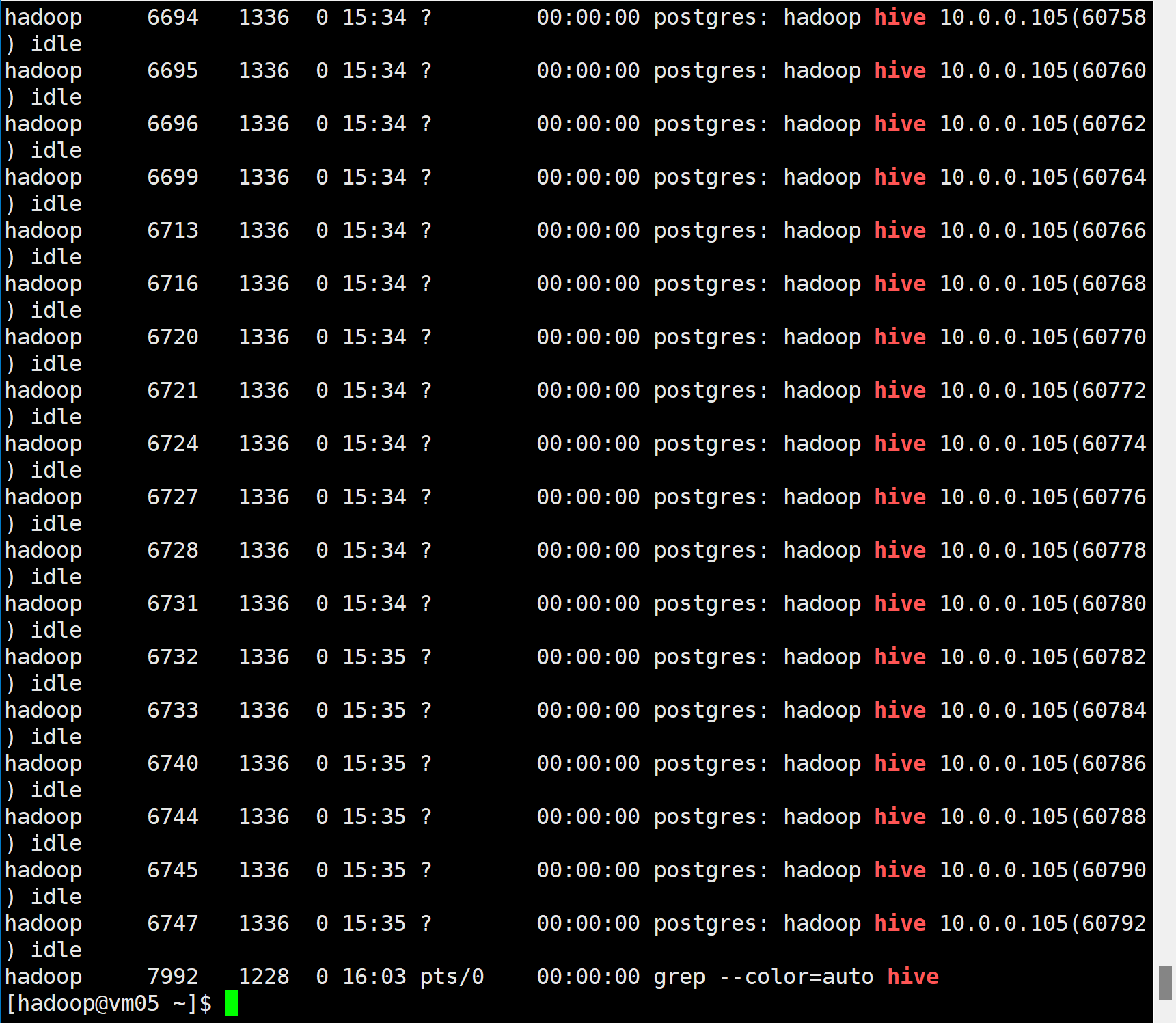基本运算——加、减、乘、除
建议直接使用运算符,函数和运算符的效果相同
代码演示:
#%%
# 加减乘除
a = torch.rand(3,4)
b = torch.rand(4)
# 这里a、b可以相加,别忘了pytorch的broadcast机制
print(a+b)
print(torch.add(a,b))
print(torch.all(torch.eq(a-b,torch.sub(a,b)))) # 减
print(torch.all(torch.eq(a*b,torch.mul(a,b)))) # 乘
print(torch.all(torch.eq(a/b,torch.div(a,b)))) # 除matmul乘
1、Torch.mm() # 仅仅适用于2维的
2、Torch.matmul()
3、@ # 和上一种的效果相同
但是这里应该注意 * 和 .matmul()的区别,* 是对于每个元素对应相乘,.matmul()是对于矩阵的相乘(矩阵相乘的不会的,建议复习一下线性代数)
代码演示:
a = torch.full([2,2],3.) # 还记得张量的创建吗,没事,我也忘了,现查以前的blog
b = torch.ones(2,2)
print(torch.mm(a,b)) # 矩阵乘法
print(torch.matmul(a,b)) # 矩阵乘法,推荐使用
print(a@b)可以使用矩阵相乘进行降维处理(用于神经网络的全连接计算):
a = torch.rand(4,784)
x = torch.rand(4,784)
w = torch.rand(512,784)
print((x@w.t()).shape) # torch.Size([4, 512])让我们一起探索一下matmul是如何应对4维张量的。
代码演示:
a = torch.rand(4,3,28,64)
b = torch.rand(4,3,64,32)
print(torch.matmul(a,b).shape) # 只取后2个维度进行计算,torch.Size([4, 3, 28, 32])
b = torch.rand(4,1,64,32)
print(torch.matmul(a,b).shape) # torch.Size([4, 3, 28, 32]),知道结果为什么这样吗?不要忘记broadcast机制哦
# 但是如果b在变身一下呢?
b = torch.rand(4,64,32)
print(torch.matmul(a,b).shape) # RuntimeError: The size of tensor a (3) must match the size of tensor b (4) at non-singleton dimension 1
# 为啥?
# 不符合broadcast机制power次方运算
接下来我们继续前进,探索次方运算。
a = torch.full([2,2],3)
print(a.pow(2)) # 通过pow()方法进行平方根的计算,推荐这种
print(a**2) # 也可以通过这种方式进行平方根计算
# 当然,它们都可以扩展到多次方
aa = a**2
print(aa.sqrt()) # 开根号
print(aa.rsqrt()) # 开根号后的倒数
print(aa**(0.5))exp log
a = torch.exp(torch.ones(2,2)) # tensor([[2.7183, 2.7183],[2.7183, 2.7183]]) e是多少?
print(torch.log(a)) # tensor([[1., 1.],[1., 1.]]) log默认以e为底approximation近似值
floor():floor地板的意思,就是向下取最大的整数
ceil():ceil天花板的意思,就是向上取最小的整数
trunc():裁剪整数部分
frac():裁剪小数部分
round():四舍五入
a = torch.tensor(3.14)
print(a.floor(),a.ceil(),a.trunc(),a.frac()) # tensor(3.) tensor(4.) tensor(3.) tensor(0.1400)
a = torch.tensor(3.499)
print(a.round()) # tensor(3.)
a = torch.tensor(3.5)
print(a.round()) # tensor(4.)clamp梯度裁剪
梯度裁剪适用于梯度零散、和梯度爆炸
grad = torch.rand(2,3)*15
print(grad.max()) # 取最大值
print(grad.median()) # 取中间值
print(grad.clamp(10)) # 小于10的值都变为10
print(grad.clamp(0,10)) # 在0和10之外的值取10
无善无恶心之体,有善有恶意之动,知善知恶是良知,为善去恶是格物。 ——王阳明


